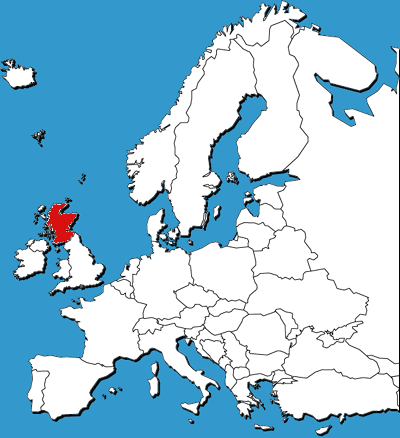
Circle the area on this map

B. Edinburgh is the seat of the Scottish government and parliament. It is Scotland's second largest city behind Glasgow. St. Andrews is named after Scotland's patron saint and is known as the "home of golf." Balmoral is the name of a Scottish castle owned as a private estate of the British royal family.
D. Scottish politicians believe Scotland is entitled to a 90 percent geographical share of the North Sea oil and gas fields, which generated about $19 billion in revenue at their peak in 2008-2009. The North Sea is on Scotland's east coast.
B. Scotland is comprised of the northern third of the island of Great Britain as well as 790 smaller islands, including the Hebrides and Northern Isles. England and Wales occupy the southern two thirds of Great Britain.
A. In 1707, the English and Scottish Parliaments passed Acts of Union to create a Kingdom of Great Britain. In 1800, English and Irish Parliaments created the United Kingdom of Great Britain and Ireland, which became the United Kingdom of Great Britain and Northern Ireland after the Irish Republic gained independence. India and Canada were part of the British Empire but not the UK.